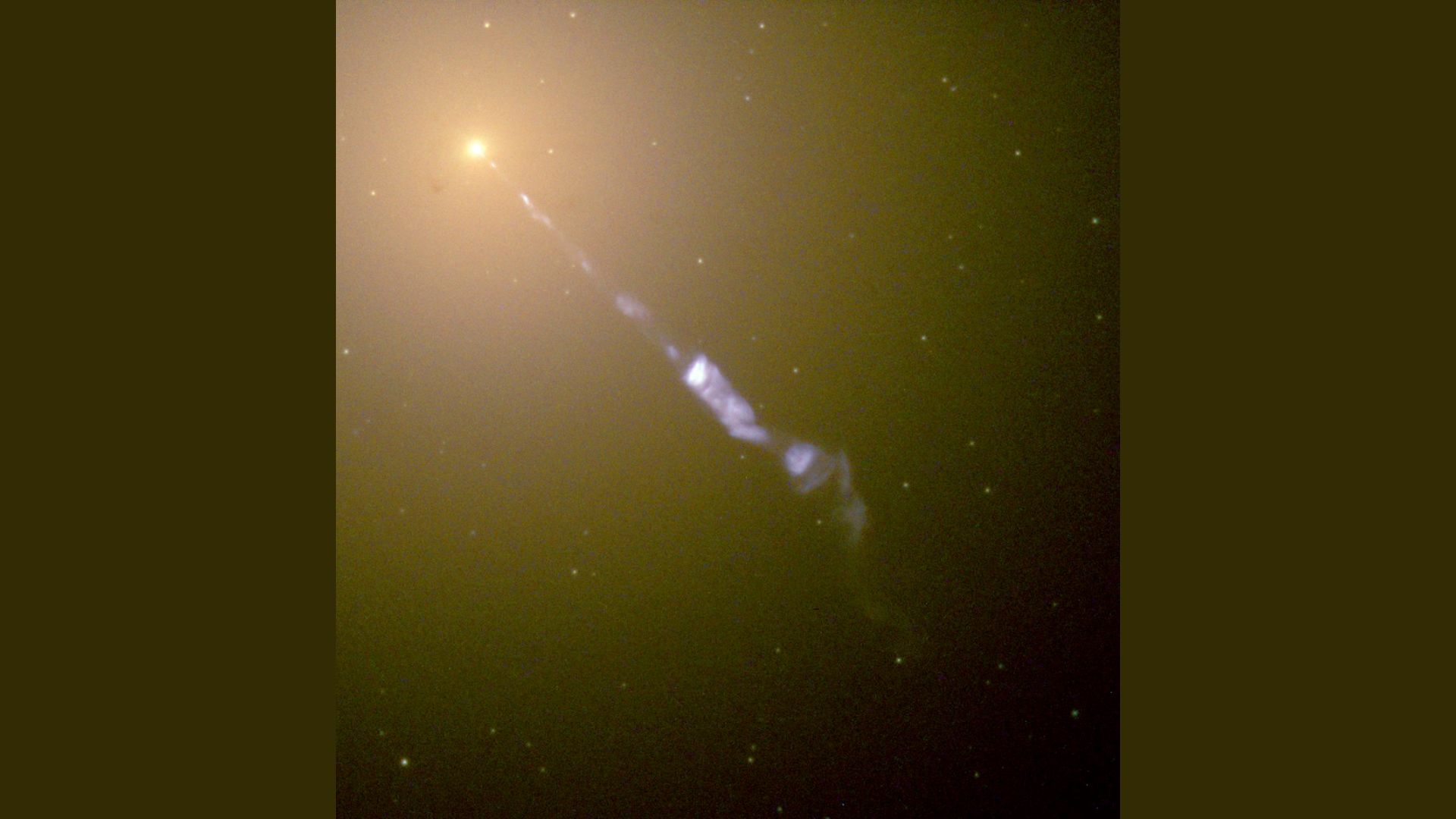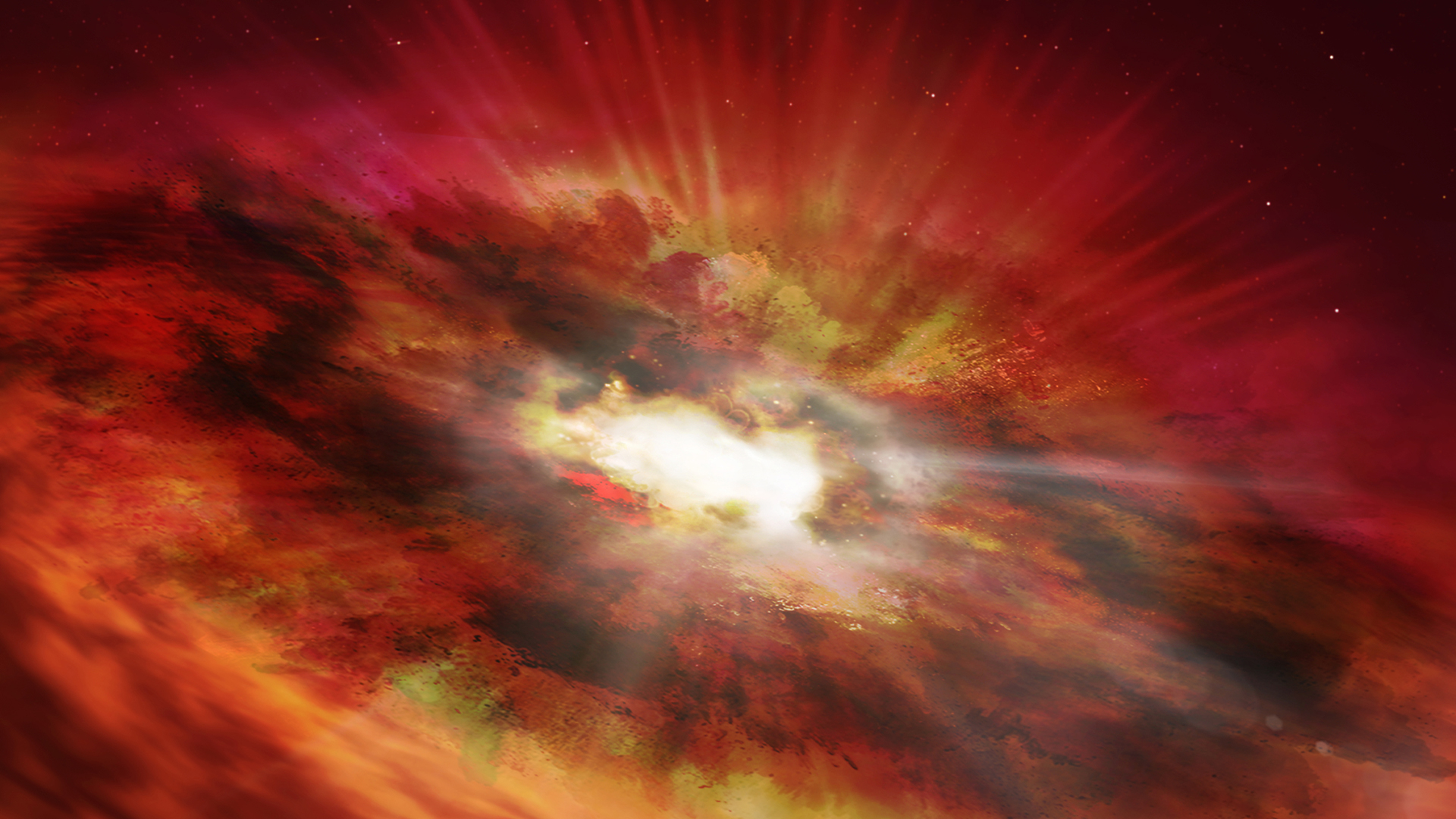Galaxies are made up of a variety of astronomical objects, including black holes, planets, and stars. At the core of the galaxy lies the supermassive black hole (SMBH), one of the most powerful and dangerous entities in the universe.
A puzzling question for scientists was whether SMBHs gave birth to galaxies, or whether galaxies created SMBHs. Events in the early universe could hold the key to this mystery.
The James Webb Space Telescope (JWST), launched by NASA in 2021, may provide answers to this question. It uses infrared technology to capture data and images that the Hubble Space Telescope cannot.
A recent study published in The Astrophysical Journal Letters used data from JWST to investigate how active galactic nuclei (AGN) in the early universe contributed to the formation of stars and black holes.
Interesting Engineering (IE) spoke to Professor Joseph Silk, first author of the study, from Johns Hopkins University and the Institute of Astrophysics in Paris.
Regarding their work, Professor Silk told IE: “JWST’s puzzling results on distant galaxies and SMBHs were a surprise, not predicted by previous simulations of galaxy formation.”
First, let’s understand what JWST is looking for – active galactic nuclei.
SMBHs and AGNs
The central region around the galaxy is compact and emits large amounts of radiation of all different wavelengths across the electromagnetic spectrum. This region, known as an AGN, has a high luminosity, much brighter than anything a star can produce.
Not all galaxies have AGNs, but most large galaxies have SMBHs at their center. SMBHs are much more massive than ordinary black holes, which can be scattered throughout the galaxy.
The relationship between AGN and SMBH is important and may answer the question of which came first: the SMBH or the galaxy. AGNs are powered by increase of material at SMBH.

Accretion is a phenomenon in which the gravitational force of an SMBH causes particles of matter (such as dust or gas) to accumulate around it, forming AGNs.
AGNs are responsible for shaping the environment of their host galaxy, which ultimately shapes star and planet formation. AGNs are called “active” because they are constantly spewing jets, outflows, and intense luminosity.
As one of the more turbulent and dynamic phenomena in galaxies, it can help us understand the evolution of SMBHs and how they contribute to galaxy formation.
As Professor Silk explained: “SMBHs are at least ten times more common in the early universe than in our current vicinity. Additionally, they are much more dominant relative to the mass of stars in the host galaxy compared to what we see today. All this suggests that massive black holes formed in the earliest stages of galaxy formation.
Redshifted light and the early universe
To study the early formation of galaxies and black holes, we need to understand the data collected by JWST.
The light that travels to us brings essential information about the universe. The more distant the origin of the light, the further back in time we observe because it takes time for light to travel from distant objects to us.
Let’s dive into it further. As the universe expands, the light emitted in the early universe has to travel a greater distance to reach us, resulting in a stretching or redshift of the light.
Red-shifted light is light whose wavelength has shifted toward the red part of the electromagnetic spectrum, indicating the age of the light.
JWST focuses on collecting data on AGN in high-redshift galaxies, which are some of the oldest structures in the universe. These early structures contain information about the early universe and the processes surrounding the formation of black holes and galaxies.
Scientists are focusing on ultra-compact galaxies reddened by dust, often referred to as “little red dots”. Professor Silk explained the reasons for this nickname.
“Most of the high-redshift galaxies observed by JWST are called small red dots, red because they are dusty and dots because they are so compact. They often contain SMBH,” he said.

Due to the presence of SMBHs, these galaxies are of particular interest in determining the evolution of galaxies in the early universe.
Using simulations and observational data from JWST, the researchers proposed a close relationship between the evolution of galaxies and SMBHs in the early universe. This led them to define three distinct epochs based on galaxy redshift, using the “z” parameter to explain the origin of both.
Defining epochs
The redshift parameter “z” tells us how much the light from the celestial object has been stretched. Simply put, it tells us how far away a celestial object is, effectively allowing us to look back in time.
First Epoch: Early Universe (z > 15)
During this time, the universe was young and galaxies were just beginning to form. These high-redshift galaxies had dense star clusters at their centers, called nuclear star clusters.
These dense stars formed a compact region near the center of the galaxy (hence the name high-redshift ultracompact galaxy) where they eventually died – forming black holes.
“The black holes in this exceptionally dense region rapidly merged with each other to form an IMBH (intermediate-mass black hole) or even an SMBH. Thus SMBH was quickly formed. Its growth was accelerated due to a really high central density,” said Prof. Silk.
This idea is supported by the large number of such galaxies seen by JWST at high redshifts, more than predicted by the models. Moreover, these galaxies are tenths or hundredths the size of the Silk galaxy mentioned today.
As black holes formed, accretion led to the formation of AGN.
Second Epoch: Star Formation Bursts (5 < z < 15)
AGNs are now prominent and turbulent, leading to an outflow of gas that will lead to star formation. The bigger the black hole grows, the more stars begin to form.
Prof. Silk explained how clouds of gas that fall into the SMBH are heated by the SMBH’s strong gravitational pull, resulting in an intense ball of energy.
He went on to say, “Due to the rapid rotation (and magnetic field) of the SMBH, most of the matter falls in to disappear into the black hole, but some is converted into a very energetic jet and energy outflow.”
“It’s this jet that slams into the nearby gas clouds in orbit, overwhelms them, and its enormous pressure compresses them.” The clouds will collapse and break into stars.”
Third Epoch: Extinction (z < 5)
As the universe moves to lower redshifts, it continues to expand. Winds near AGN cause the dispersal of gases necessary for star formation.
If the gas reservoir is depleted, star formation will also be dampened, leading to a lower rate of star formation over time in the galaxy.
Synergy, coevolution and the future of JWST
There appears to be a close relationship between the evolution of SMBHs and their host galaxies, relying on a synergistic relationship between AGN activity and stellar activity.
This means that AGN activity, driven by the accretion of matter onto the SMBH, affects star formation by releasing large amounts of energy. Conversely, stellar accretion can affect the SMBH by causing stellar mass loss, which can contribute to the accretion disc.
This bimodal or dual synergy tells us that the joint evolution of SMBHs and their galactic hosts is complex. The study of AGN can provide greater insight into these complex processes, which is why the data collected by JWST is so important.
Regarding future measurements from JWST, Prof. Silk said: “New observations will be available from JWST next year. These will provide improved spectroscopy. This will allow us to more precisely measure the masses of SMBHs and stars, especially in the centers of galaxies that host SMBHs.
However, he also highlighted the absence of high-resolution simulations needed to fully understand the phenomena of cloud crushing (gas cloud) and star formation.
Therefore, the question of whether SMBHs or galaxies formed first remains unresolved.
ABOUT THE EDITORIAL
Tejasri Gururaj Tejasri is a versatile Science Writer & Communicator, using her expertise from her MS in Physics to make science accessible to all. In her free time, she enjoys spending time with her cats, binge watching TV shows, and rejuvenating through sleep.


